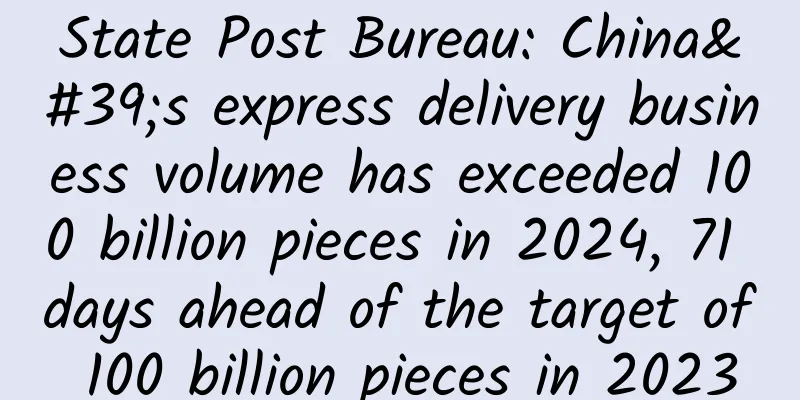RetailX: Spanish e-commerce market report to 2022

|
Spanish Economic Overview RetailX, an analysis agency, released a report on e-commerce in Spain in 2021, saying that Spain, the fourth largest economy in the European Union, is one of the countries most affected by the pandemic in the world, with a GDP decline of 11% and unemployment rising for the first time since 2013. With the support of 140 billion euros from the EU Pandemic Recovery Fund, Spain's economic situation is expected to improve. In December 2021, the OECD predicted that Spain's GDP will grow by 5.5% in 2022. Although the number of international tourists in March 2022 is still 30% lower than in 2019, analysts said that Spain's tourism industry is recovering in a strong manner. However, the outbreak of the Russian-Ukrainian conflict has caused the economic situation to take a sharp turn for the worse again. Although Spain is not as dependent on Russian oil as some other EU countries, it is not immune to the impact. In addition, global supply chain issues have further exacerbated price increases. In May 2022, Spain's inflation rate reached 8.7%. The OECD predicts that this year's inflation rate will remain high at around 8.1%. In June 2022, the OECD lowered its forecast for Spain's GDP growth to 4%, and it is expected that by 2023, GDP growth will hover at a low level of 2.2%. Spanish e-commerce market The Spanish e-commerce market has been in a lukewarm state for a long time. In 2014, online shopping expenditure accounted for only 3% of total consumer expenditure, 5% in 2018 and 8% in 2019, and increased to 10% in 2020. It is expected to be 11% in 2022. This figure is pitifully low compared with the world. (Online shopping expenditure only accounts for the proportion of total consumer expenditure year by year) In 2022, the Internet penetration rate in Spain was 93%, and the proportion of online shopping among netizens was 68%. According to researchers at RetailX, this figure is at a medium level among countries in the European Economic Area, the United Kingdom, and Switzerland (EEA+2). In 2020, the online shopping rate of Spanish netizens was 60%, and in 2021 it was 63%. The online shopping rate only increased slightly during this period, indicating that the epidemic has not had a substantial impact on the consumption habits of Spanish people. It is true that some people are forced to shop online due to the closure of physical stores, but compared with other regions, Spanish people do not seem to be so "enthusiastic" or "addicted" to online shopping. After the epidemic, 35% of Spanish consumers will buy groceries online, which is a more obvious change. You should know that before the epidemic, even in the UK, where the online shopping rate is among the highest in the world, online grocery shopping is still not popular among consumers. Spain, which has experienced the epidemic, has achieved it in one step. Now, grocery suppliers are speeding up the integration of back-end systems to meet the needs of the Spanish market. Data shows that fashion products are the main category of online shopping for Spaniards. At the same time, Spain's fashion industry is leading the reform at home and abroad through fabric innovation and optimization of production links, highlighting the concept of sustainable development and environmental protection, while shouldering the responsibility of a fashion power. Spain's population has been rising slowly in recent years and is expected to reach 47.4 million by 2022. According to the land area of Spain, there are only 93 people per square kilometer, which can be said to be sparsely populated. In terms of population distribution, the majority of people live in urban areas, making the Spanish capital Madrid and the famous city Barcelona one of the most densely populated cities in Europe. Once upon a time, young Spaniards left their homeland to make a living. Today, the bustling crowds in cities, especially young people, together with new shopping methods such as live streaming purchases and limited-time flash sales from abroad, are driving the local e-commerce market towards growth, innovation and development. (The figure above shows the annual population changes and the age distribution of the population in 2020; the figure below shows the annual population change trend. The orange line represents Spain, and the black line represents the European Economic Area + the United Kingdom and Switzerland, that is, EEA+2, the same below) (Year-on-year changes in GDP per capita. The labels on the left are Spain, EEA+2, and the world from top to bottom. Unit: Euro) While the growth of e-commerce markets in many countries is driven by individual cities, in Spain, due to historical reasons, power is decentralized to local areas, and cities enjoy a large degree of autonomy, such as Catalonia, Galicia and the Basque region, which have capitals. Different retailers have their own active "territory", and some have gone international, such as Zara. In 2019, only 57% of Internet users in Spain shopped online. The pandemic has given a huge boost to Spain's e-commerce market, with some people experiencing online shopping for the first time and others increasing their online shopping efforts and spending. By the end of 2021, this proportion had risen to 63%. Those who tried online shopping for the first time were mainly the elderly. (The above picture shows the annual changes in the Internet penetration rate in Spain; the following picture shows the annual changes in the proportion of Internet users who shop online) Focus on local trends in Spain Online shopping categories The categories of products purchased online by Spanish netizens have increased compared to before the epidemic, and the proportion of online shopping for groceries, electronic products, clothing and gifts has also significantly exceeded that before the epidemic. Nearly one-third of the respondents said that they have increased the frequency of online gift shopping recently or abandoned physical stores to buy gifts online. Similar trends are also reflected in clothing purchase habits. In addition, 11.8% of respondents said they would not buy groceries online before the pandemic, but developed this habit after the pandemic. Data shows that this proportion is higher than the European average. In addition, fashion products account for the majority of online purchases by Spanish netizens, followed by household items. (How the epidemic has affected the online shopping habits of Spanish people, the labels from left to right are: never, never bought products in this category online before the epidemic, reduced the frequency of online shopping in this category, increased, and remained the same; the horizontal axis represents the category, from left to right: online shopping for groceries, electronic products, clothing, gifts, and takeaway food) (What types of products do consumers in Spain and Europe tend to buy online? The labels from top to bottom represent: Spanish and European average levels) Currently, 45% of respondents shop online more than once a month, and 17% shop online more than once a week. Many people in Spain still like to shop in physical stores, with 9% of respondents saying that this is a habit. (The left picture shows the survey results of online shopping frequency; the right picture shows the survey results of reasons for not shopping online. The survey time is 2021) Online shopping expenses The average online spending per capita in Spain is 1,452 euros, about half that of Denmark. (Average online shopping spending by country in 2021, in Euros) Between 2020 and 2025, the Food & Personal Care category will see revenue growth of 9.5%, from $3.722 billion to $5.859 billion. The Electronics & Media category is forecast to grow at a CAGR of 8.5%. Fashion will continue to see revenue growth through 2025, but at a slower pace than the other categories. (Distribution and forecast of e-commerce revenue in each category. The rightmost column represents the compound annual growth rate of each category from 2020 to 2025. The labels from top to bottom are: Furniture & Appliances, Toys & Hobbies & DIY, Food & Personal Care, Electronics & Media, Fashion) Most Spanish people prefer to shop online on e-commerce platforms, with Amazon being their first choice. Respondents who choose search engines or independent websites account for a relatively small proportion, as shown in the figure below. (Spending share of consumers of different age groups in each category on Amazon Spain in 2021) Online shopping equipment In the 12 months before mid-March 2022, 63% of people used their mobile phones to shop online, a significant increase from the 55% reported by IAB Spain two years ago. IAB Spain also found that the proportion of people of different age groups shopping through mobile phones is almost the same, with the largest proportion being people aged 35-44, at 13%. According to a survey conducted by Statista on Spaniards in 2035, less than half of them shopped online via mobile phones. Among the 2,035 respondents, less than half used laptops to shop online in the past year, 29% used desktop computers, 9% used smart TVs, and 7% used smart speakers such as Amazon Echo. At the beginning of 2022, there were 55.52 million mobile phones connected to Spain's mobile network, a proportion that grew faster than the growth of new Internet users. In addition, 46.2% of Spanish Internet users' "surfing time" was spent on smartphones. According to GWI data, Spanish consumers spend an average of 6 hours a day online, of which 2 hours and 48 minutes are spent on mobile phones. Spanish consumers have become accustomed to the convenience of smartphones and like the convenience and speed of mobile shopping. Two retailers appear in the top ten list of mobile applications with the most active users in Spain, they are Amazon ranked fourth and Alibaba ranked ninth. Payment habits Debit and credit cards are the most commonly used payment methods in Spanish e-commerce. 99% of the Top 250 retailers offer this payment method. The rise of mobile payments based on smartphones and tablets is shaking up the existing landscape. More and more retailers support e-wallets as an online payment method, accounting for 39% of respondents. Among them, PayPal is the most commonly used e-wallet in Spain, accounting for 87% of such transactions. In 2021, in Spain, 89% of the Top 250 retailers offer this payment method to consumers. 16.8% of respondents choose online shopping because retailers offer interest-free installment payment methods. PayPal, Klarna, Viabill, ClearPay and Mash, which provide BNPL services, recorded strong growth in Spain in 2021. BNPL is predicted to grow at a compound annual growth rate of 24.9% during 2022-2028. In 2022 alone, the predicted growth value of 51.4% will bring the total payment amount of BNPL to US$3.52 billion. (The survey results of online settlement payment methods, from top to bottom, are: credit card or debit card, e-wallet such as PayPal, direct payment, cash on delivery, bill payment, APP, installment payment) ·logistics Data shows that home delivery is the third most important reason for Spanish netizens to choose online shopping, second only to price advantage and convenience. 69% of people choose to mail online shopping products to their homes and require a signature to indicate receipt; 17% choose home delivery without a signature; 5% choose to deliver to a delivery address used by multiple people (such as domestic express delivery stations); 5% choose to pick up the package themselves, and only a small number of people choose to pick up the package from the retailer's store. For the delivery cycle of electrical appliances and household goods, a large number of people said they were willing to wait 2-3 working days, but 41% said they hoped that products such as clothing and shoes could be delivered the next day or the same day; 36% hoped that health and beauty products could be delivered the next day, while 30% said they could wait 2-3 days. As for food and alcohol orders, 27% hoped that they could be delivered the next day, 36% hoped that they could be delivered the same day, and 13% hoped that they could be delivered within an hour. (Survey results on delivery methods) (Estimated waiting time for delivery by category, from left to right: groceries, branded food, alcoholic beverages, back-to-school products, health & beauty, home decorations, home appliances) Social Commerce More and more Spanish online shoppers are keen to interact with brands and retailers on social media platforms. In Spain, more than 80% of the population has registered at least one mainstream social media platform account, among which WhatsApp is the most popular communication application, and YouTube has the largest share of video viewers, with an advertising reach of 40.7 million in early 2022; Instagram follows closely with 22.85 million accounts in Spain; Facebook has 20.2 million Spanish users, TikTok has 13.73 million, Snapchat has 34.6 million, and Pinterest has 7.04 million users. Overall, Spanish consumers spend about two hours a day on social media. According to GWI data, 64.6% of social media users search for brand and product information on the platform, of which 24.4% follow brand accounts they have purchased from. 85% of Spanish consumers aged 18-45 said they have been inspired to buy something on social media platforms. Retail website traffic By analyzing Spanish consumers’ online shopping channels, website traffic, and retailers’ headquarters locations, we provide in-depth insights into consumer and retailer behavior to understand the impact of international retailers on Spanish trade and the extent of Spanish retailers’ expansion abroad. Of the top 100 retailers by traffic, 28 are Spanish companies, 15 are headquartered in France and 14 are in the United States. (The country distribution of the top 100 retail websites in terms of website traffic. The icons on the left are Spain, France, the United States, China, Germany and other countries from top to bottom) In terms of website traffic, US retail websites account for about 56.1% of the traffic, Chinese retail websites account for 17.6%, and Spanish retail websites account for slightly more than 10%, which shows that Spanish consumers love US retail websites. These retail websites focus on localized operations, providing appropriate website languages, delivery methods, and payment methods for target audiences. Many of these websites are operated by local teams or business departments in Spain. (Traffic distribution of the top 100 retail websites by website traffic) The websites with the highest traffic rankings include Microsoft, AliExpress, Amazon and eBay. Among e-commerce platforms, AliExpress has more than three times more consumer visits in Spain than Amazon. Alibaba regards Spain as one of its main target markets for expansion and has invested heavily in its business in Spain. Cainiao Logistics has also set up a network of 170 parcel lockers in Madrid and Barcelona and brought the Double 11 shopping carnival culture to Spain. (The most visited retail websites in Spain in 2021, in millions) Of the 28 Spanish local retail websites on the list, more than half of their website traffic comes from domestic consumers, and the rest is scattered in many different countries. This shows the large number of Spanish-speaking consumers scattered around the world and also highlights the wide marketing scope of Spanish retail websites. (Traffic distribution of the top 28 Spanish retail websites by traffic region) Fashion Compared with other categories, Spanish consumers are more inclined to buy fashion accessories online. Data shows that 57% of Spanish consumers buy fashion online, while the average level in Europe is about 44%. In 2021, online fashion sales in Spain reached $7.44 billion, up from $6.32 billion the previous year. As consumers spend more on clothes, shoes and accessories online, online fashion sales in Spain are expected to reach $9.2 billion by 2025. (Online fashion sales in Spain from 2017 to 2025, in millions of US dollars) By transaction volume, 64.8% of Spanish e-commerce transactions took place on foreign retail websites in 2021, and about 55.5% of the total transaction volume went to overseas retail websites. German fashion platform Zalando, Swedish H&M and Dutch C&A have attracted a large number of Spanish consumers, and can be regarded as a model of cross-border localized expansion of e-commerce websites. Many international companies have also started to develop dual channels and strive to open up offline channels. For example, French fashion brand Kiabi has launched an independent website and 53 physical stores in Spain, and plans to continuously expand the number of stores and improve the level of operation through omni-channel services. In June this year, Chinese fast fashion brand SHEIN also made a stunning debut in Barcelona with a pop-up store. From: cifnews |
<<: The more we stay at home, the more we shop?!
>>: Tuniu: 2022 National Day Tourism Consumption Trends
Recommend
[Smart Farmers] Why did this plant make ancient poets feel mixed emotions? Uncover the secrets behind the "darling of poetry"
Your browser does not support the video tag In an...
Fried Vaccaria
Speaking of Fenugreek, I believe many friends kno...
The efficacy and function of Malan flower
If the amaranth flower is purple, it looks very f...
Mars Exploration: Why Should Humans Conquer the Red Planet?
In the solar system, Mars, Mercury and Venus are ...
Are pre-prepared meals unsafe? Do they reduce nutritional quality? Are they harmful to health? The truth is →
gossip With the accelerated pace of life and the ...
How much turmeric should be used?
Curcuma is a traditional Chinese medicine. There ...
New power grid, all relying on "wind and solar"? Unveiling the new power system
In your life, are you promoting such behaviors th...
What do plants do to protect themselves?
In nature, plants are always at a disadvantage, a...
Don’t be greedy for Yunnan mushrooms, these 6 kinds of mushrooms in supermarkets are also delicious and nutritious (with recipes included)
Since the beginning of human life, people have of...
The efficacy and function of comb grass
Comb grass is a very nutritious and precious medi...
What is happening to the Qinghai-Tibet Plateau under the influence of global warming?
The Qinghai-Tibet Plateau is known as the "R...
If you drop a bird on the moon, how will it take off?
Follow Captain Da Shanzha Wan Check out more hard...
The efficacy and function of weasel meat
Most people are already familiar with weasel meat...
The Winter Olympics is coming, but you still don’t know the difference between short track speed skating and speed skating?
The opening of the Beijing Winter Olympics is get...
The "Aristotle's Lantern" in the sea, is it an edible "lamp"?
In the deep blue ocean, sea urchins move quietly ...









